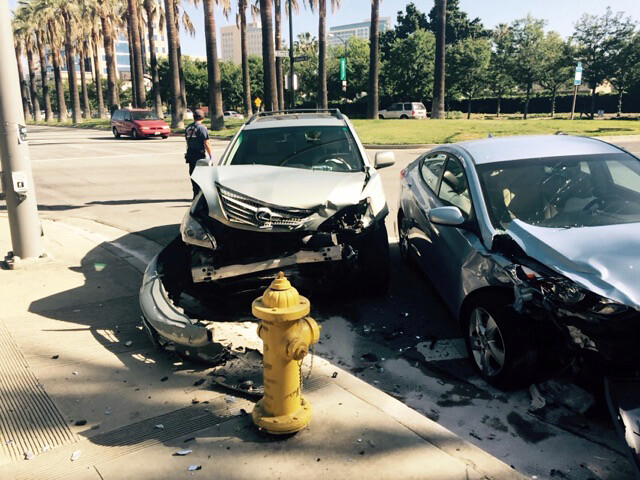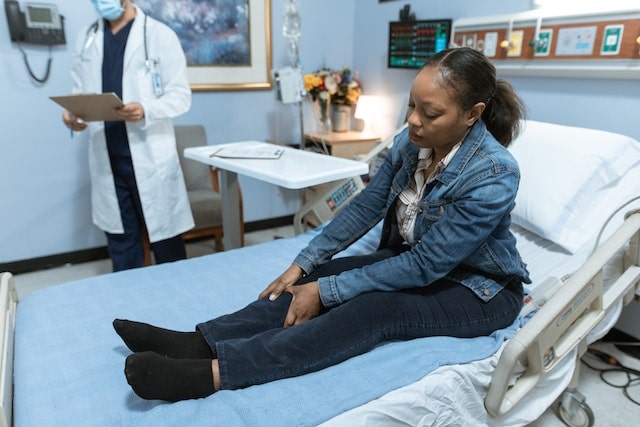With the uptick in surgeries that are taking place in no-fault practice, the question that every claims representative or defense attorney evaluating these types of cases needs to ask is: “was this injury causally related to the accident?”
As a Plaintiff’s attorney, the question you need to ask, in response to this, is how do you at least raise a triable issue of fact when faced with what should be the inevitable summary judgment motion from the defense attorney.
This is a case from the First Department, where in my opinion, they lay out how a plaintiff needs to address this type of defense.
Malloy v Matute, 2010 NY Slip Op 09383 (1st Dept. 2010)
While defendant’s experts found that plaintiff’s injuries were degenerative, plaintiff’s doctors were unanimous in concluding that the subject accident was the sole competent producing cause of plaintiff’s knee injuries, based upon (1) their individual examinations; (2) MRI results; and (3) the necessity of surgery to repair a tear in the medial meniscus, a partial tear of the anterior cruciate ligament, chondromalacia, synovitis, and fibrosis (see Pommells v Perez, 4 NY3d 566 [2005]; Colon v Bernabe, 65 AD3d 969, 970 [2009]). It also bears noting that plaintiff was 37 years old when he was hit on his right side by defendant’s taxi, he had no prior knee problems or injuries to his right leg, and his right knee surgery took place within four months of the accident.”













14 Responses
in no-fault, the burden is less because aggravation of an existing injury is sufficient to establish causation. As a result, a surgeon can also argue that, even if there was degeneration of the joint at issue, the covered incident caused additional symptoms such as pain that required surgery to be treated.
The burden on the defendant in the summary judgment postulate is the same – I think – whether it be a no-fault or a 5102(d) case. Lack of causation should never differ. I also am not sure subjective symptoms of pain, in the no-fault context, are sufficient to a constitute an aggravation to impose coverage upon an otherwise non-covered event.
Maybe this comment is off. Maybe things are bit more complex but I don’t think so.
There is still an egg shell plaintiff rule in NY. For e.g. the knee sucks. Its all messed up. The guy played football and did MMA with plenty of knee locks. But he’s getting around fine.
Bam the accident. And everything that was about to give — well it gives.
We measure causation from the give for all purposes. What did he lose because of the accident.
The causation defense is much more powerful to defeat a personal injury claim. In a personal injury claim, an “eggshell plaintiff” would be entitled to only minimal damages if an accident cracks the eggshell. In a no-fault context, the surgery to repair the shell would be 100% covered no matter how fragile the patient was at the time of the accident.
Under Stephen Fealy, M.D., P.C. v. State Farm Mut. Auto Ins. Co., complaints of pain after the accident are sufficient to defeat summary judgment. If a patient reports that before the accident, the joint in question was functional. However, after the accident there is pain and difficulties with range of motion, walking, etc. Unless there is an exam prior to the accident, there is no way for an insurer to refute the claim that the symptoms were caused by the accident as opposed to any prior conditions.
It is no different in BI. The thing about BI is that there are two (2) inquiries. The first involves causal relationship. The second involves whether the exacerbation is a serious injury. In no-fault, you only deal with the first. As to Fealy, you need to see the record on appeal before you make the conclusions you did. The Court held that the hospital records and complaints of pain coupled with a garbage affidavit were sufficient to defeat a causal relationship motion. It also was the first of what might be many cases on the topic, and who knows where subsequent cases will go. I would be curious to see where the Appellate Division would go with this issue.
J.T. you nailed it. That’s why it seems easier in No Fault because there is no serious injury requirement.
The guy’s knee is about to fall apart but he’s walking. Bam the accident and now he needs a knee replacement and will always walk with a cane. Defendant has to pay for PI damages from knee replacement through loss of movement — I can no longer do MMA; have sex; etc.
That’s the Egg Shell Plaintiff rule. No?
You are out of your mind Ray. You are correct. My only question is that if the guy had an asymptomatic bum knee, why the heck would he be doing MMA and risk the need for a total knee replacement, irrespective of whether he is involved in a motor vehicle accident.
the reason he’s doing MMA is because he’s asymptomatic. He doesnt know about any problems until it affects his life.
Honestly, I have trouble believing that. There has to be some clue that something is amiss. In the hypothetical world, that is possible. In reality, I have to imagine that most asymptomatic persons were symptomatic prior to attaining asymptomatic status.
I simply made the hypothetical in extremis to have my point confirmed — that is all.
I have been out of personal injury for a while and was just making sure that the Appellate Term did not get rid of the hornbook with regard to the Egg Shell Plaintiff Rule as they did with just about everything else.
That being said it is possible to have an active guy with a bum knee just waiting to totally go. I played D-1 football and I know a bunch.
I remember when I first started at the Corp Counsel. I am doing a depo of a guy who’s knee tendon snapped as he went down steps. He claimed there was a defect in the steps. I did a thorough job and found out that the tendon in his other knee snapped while descending steps. “That’s my knees. That’s what they do. I have to live with it.”
I thought “Wow I got ’em. He’s predisposed to knee injuries.” And then one of the senior attorneys said “Ray you just got out of law school. Don’t you remember the Egg Shell Plaintiff Rule?”
However the above fact pattern does make for some interesting issues. The argument would be that there was no defect or since there was a picture of the defect [the step had a slight incline] — a gutsy lawyer would have argued that your knee tendon snapped on its own; then your lawyer saw the defect and said “let’s blame it on that.”
A judge could kill that whole line with one or two sustained objections.
Trial tip: Open on it. Explain to the jury that there are two phases to this trial. Negligence/causation and then injury. [explain it] Then the order is important here.
Start by saying that in this case there is an injury and there is a defect but the defect did not cause the injury.
Continue by saying that slight incline on the steps was an opportunity to make money for the Plaintiff. When the Plaintiff’s knee tendon snapped it just snapped on its own. The plaintiff’s lawyer said “you can’t sue for that” so they decided to blame the incline.
Tell the jury you will see that this is true because the evidence will demonstate that the Plaintiff has a condition where his knee tendons just snap when going down stairs.
Sounds hard to believe but listen to this.
It happened once before. The Plaintiff was simply walking down some stairs and the tendon in his other just snapped by itself. The same exact type of snap. You’ll see that the Plaintiff testified under oath: “That’s my knees. That’s what they do. I have to live with it.”
And when it happened here the Plaintiff said “hey time to make some money” — so him and his lawyer blamed the defect so that they could sue.
Because you can’t sue if your knee tendon’s just snap by themselves.
Judge is hard pressed to sustain an objection to questions about the prior injury once you have presented your theory.
Once the jury hears that this guy’s knee tendons snap by themselves they’ll nullify the law.
Of course you have to lead off every accusation with “the evidence will demonstrate” so that you don’t get a sustained objection as to the opening being arugmentative.
“The evidence will demonstrate that the Plaintiff and his lawyer decided to blame the step because you can’t sue when your knee tendon snaps by itself. You’ll see ….” [Then list the evidence — the other knee snapping; the slight incline of the step; the lawyer is the plaintiff’s friend’s uncle; etc]
The summation can be argumentative but not the opening.
JT,
I think you are confusing reality with proof. Even if he has an inkling, it’s realistic to assume he will report that his injuries and disability are caused by the accident.
Further, it is extraordinarily difficult to refute the assertion that the accident caused the injury and symptoms without medical records documenting the condition of the joint prior to the accident. In most circumstances, they dont exist.
I am not confusing reality with proof. I am cognizant that the evidence viz medical records and other documentary evidence will demonstrate that the patient never had any prior complaints of pain or symptoms prior to the MVA. Yet, the reality is usually otherwise. Yes, go prove it. I understand your point.
Wait boys. This debate is starting to miss the point. I don’t care if he had 10 prior surgeries on the damn knee. If the accident injures the knee further then if your the insurance company you are on the hook. Even if it injures the same part of the knee that was surgically repaired.
Now it is a matter of degrees. If the subject accident is a 60 mph head on collision it is easy.
If it is a low damage 5 mph hit then it might be tougher on the claimant/plaintiff. But under the law if the knee was a basket case. A time bomb. And the five MPH was the straw that broke the camel’s back this time around — even if the camel’s back was going to break anyway; your stuck with it.
“Yeah the knee stunk. Major surgeries. But I was getting along with it. It hurt. I limped but I got around. Now I need a four prong walker/cane to even go ten yards and that’s it”
Well the insurer is stuck with that if the proof is there.
“Patient had prior knee surgeries, etc. Prior injuries aggravated by accident …”